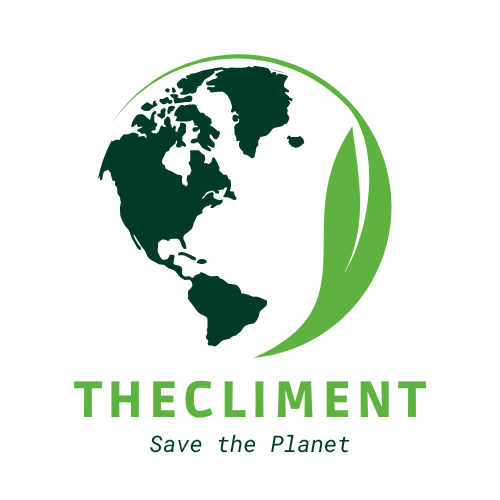
Introduction
Hazardous waste is waste that causes a threat to human life, health, or the environment in adequate quantities and concentrations when it is unsuitably stored, transported, treated, or disposed of.
Hazardous waste is typically a byproduct of industrial processes involving heavy metals and different oil and petrochemical categories and products such as Polyvinyl Chlorides and plastics, polluted electronic waste materials such as PCBs and DDT, etc., and eventually a volatile liquid, which are now documented as highly poisonous and effect on all forms of life. Hospitals are also labeled as one of the latent sources of hazardous waste.
Difference between Hazard and Risk
The terms hazard and risk are often substituted and supposed to have similar meanings to most people. About chemicals, however, the terms are rather different. Hazard refers to the characteristic properties of a chemical substance that make it able to cause harm to a person or the environment. Risk is the likelihood of harm arising from a specific exposure to a chemical substance, under explicit conditions.
Classification of Hazardous Wastes
A waste is categorized as hazardous waste if laboratory tests show that it has one or more of the subsequent four characteristics.
- Ignitability: The ability to easily catch fire and thus pose a fire hazard.
- Corrosively: The ability to decline due to a highly alkaline or acidic nature, such as battery acid.
- Reactivity: The ability to have possibly harmful, rapid reactions like explosions, such as phosphorus.
- Toxicity: The ability to release such elements or compounds into the water at considerable concentrations under defined conditions, for example, leaching.

Sources of Generation of Hazardous Wastes
Hazardous waste is produced from a wide range of industrial, commercial, agricultural, and household activities. Companies that make everyday products, and manufacturers of particular items, produce them through service and trade businesses, car repair shops, research laboratories in schools, hospitals, government amenities, and households. The producer can either handle the waste on-site or transport it to the site for processing, recycling, or disposal after the waste is produced.
How Chemicals Disperse into the Environment
A person can come into contact with hazardous chemicals in different ways are called exposure pathways. Some of the common ways a person may be exposed include:
Water: People might get exposed when they drink, bathe, shower, or swim in polluted groundwater or surface water. If someone goes swimming in polluted water by chemicals he may not realize it until it reacts.
Air: Exposure to air can occur when people inhale hazardous chemical vapors or dust.
Food: It occurs when people feed on certain foods that have been contaminated. Food gets contaminated when it comes into contact with hazardous chemicals through water.
Groundwater Contamination by Hazardous Waste
Contamination of groundwater may result from leakage of hazardous chemicals, leakage from underground tanks comprising hazardous substances, discharges of industrial and domestic wastewater, disposal of toxic waste, and leachate from landfills. The groundwater is usually polluted by one or more of the following pollutants transferred from their sources to the aquifers:
Wastewater: Domestic and industrial wastewater is a main source of groundwater and surface water pollution across developing countries.
Pesticides: Sometimes the flooded water from agricultural fields transmits chemicals and pesticides responsible for water contamination.
Chlorinated solvents: Metal finishing and plastic waste, electronic equipment, membrane cleaning, and aircraft productions often discharge chlorinated solvents and contaminate groundwater.
Heavy metals: pollutants like lead, manganese, mercury, copper, iron, arsenic, cadmium, nickel, gold, aluminum, and beryllium, etc. are extracted from waste and landfills, tailings mining, and hazardous waste landfills.
Leachate: When the water penetrates the garbage under gravity until it reaches the bottom, is called leachate. The leachate then migrates down and reaches the groundwater table. After reaching the groundwater, the pollutants are mixed with the groundwater forming a groundwater cloud that migrates into the aquifer making it dangerous for living life.
Impacts of Hazardous Waste on Human Health
Inadequate storage, processing, handling, treatment, and disposal of hazardous waste affect human health and the environment by discharging contaminants into soil, groundwater, and atmosphere. The populations may be affected adversely if toxic waste is absorbed through contaminated water supplies and polluted soil and air, from where it can be transported through penetration and may ultimately enter the human food chain either directly or indirectly. Exposure to hazardous waste can cause several health issues, including impairment, skin irritation, cancer, breathing problems, disruption of the nervous system, hormonal disruption, and liver damage.
Lead: It is a toxin that affects human bodies when ingestion and is mildly annoying. Common air pollutants due to inferior fuel used in the automobile industry, which is now eliminated by the use of unleaded petrol, and steps have been taken near industrial facilities. Lead can cause neurological damage mental retardation and other problems.
Chromium: Chromium intake in higher quantities is the cause of cutaneous and nasal mucosal ulcers, digestive tract cancer, and dermatitis. Many chromate salts, such as calcium chromate, are cancer-causing when inhaled. Chromium industry workers have been identified as having lung cancer.
Zinc: Zinc when inhaled affects the respiratory system and is painful to the skin.
Mercury: Liquid mercury used in thermometers contains a strong neurotoxin that can trigger severe brain damage, emotional disturbance in adults, and moderate tremors in the fetus.
Waste oil: Marine species can be negatively affected even if they are exposed to low waste oil concentrations. Because waste oil comprises various hazardous contaminants. Burning of oil increases air pollution as toxic gasses are dispensed into the atmosphere, disturbing the ecological balance.

Ways to Hazardous Waste Disposal
There are several ways to dispose of hazardous waste, some of which are discussed below;
- Chemical treatment such as precipitation, neutralization, ionization, or oxidation.
- Thermal treatment, for example, incineration.
- Biological treatment, e.g., land farming, and
- Physical treatment such as solidification, sedimentation, flotation, filtration, or evaporation
The first three types convert waste at the molecular level, while the fourth results in waste solidification, volume decrease, or concentration.
In addition to detoxification, you can use high-temperature incineration to destroy some organic wastes. Equipment used for this purpose includes:
- Multiple hearth furnaces,
- Liquid injection incinerators
- Rotary kilns, and
- Fluidized bed incinerators
To treat organic wastes released from the petroleum industry or elsewhere land farming can be used. Waste-metabolizing microbes and other nutrients can be added to enhance treatment.
A common way of solidification is by using plastic, asphalt, or concrete to condense the waste. This method creates a leach-resistant, solid material mass.
Underground Disposal
The only way this method is submissive is when the hazardous waste is brought to mines that are either sedentary or partially active. Many companies must dispose of radioactive waste, whether from radioactive ore mining, laboratory experiments, medical treatments, or nuclear fuel production. In that case, this method is one of the strong, and cost-effective options.
Landfill Disposal
Landfills and dumpsites are the most communal and oldest-used methods to dispose of hazardous waste. Hazardous waste landfills are built specially and are not planned for liquid wastes. They are engineered and excavated in such a way that they are within the ground rather than piling upward. https://thecliment.com/landfill-emissions/
Clay or other non-porous materials are used to line up these landfills to prevent the waste from leaching into the ground. Some additional protections are leak protection systems, wind dispersal controls, and a double liner so that humans and the environment come into contact with as little waste as possible.

Ocean Dumping
To avoid groundwater contamination, deep-sea dumping is sometimes used. It is necessary to treat hazardous waste before disposing of it, as ocean dumping has a most important impact on marine life and also it is important to human health since the waste can make its way to humans when they utilize seafood.
Recycling: Alternative to Hazardous Waste Disposal
Recycling is desirable for hazardous material disposal for numerous reasons. It results in decreases in our raw material dependence nationally, economic benefits, prevents pollution, conserves natural resources, and cuts energy use.
Any of the following are ways are used to dispose of hazardous materials:
- Reclaiming- a process of regeneration or processing to recuperate a useful product
- Reuse- Replacing it for another product or using it as an industrial component
- Burning to recover energy- Burning for fuel
- Disposal through use- Placement of waste on the land
 The Climent Respect your roots, Protect your planet
The Climent Respect your roots, Protect your planet

2 comments
Pingback: Biological Hazard: 7 Alarming Examples of Biohazards & How Can We Manage Them - The Climent
Pingback: What is Wastewater? 3 Principal Wastewater Treatment Techniques, Advantages and Disadvantages